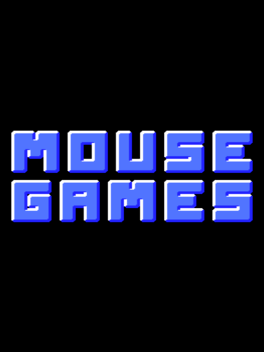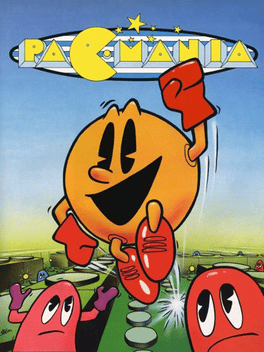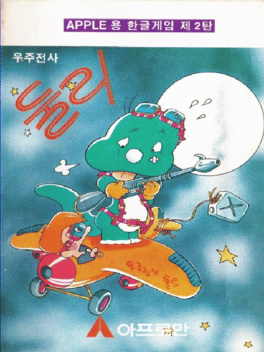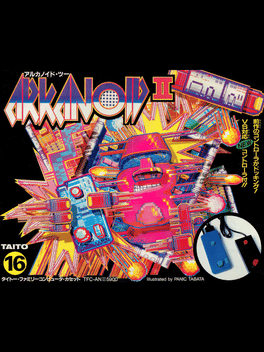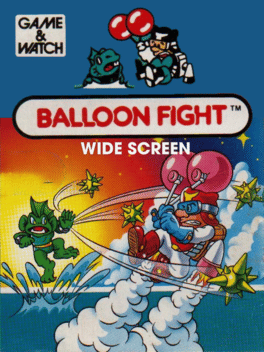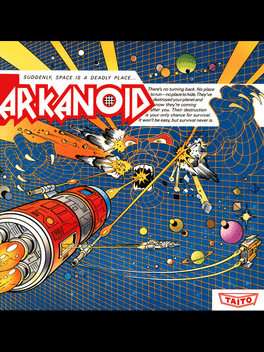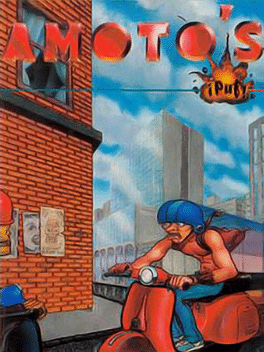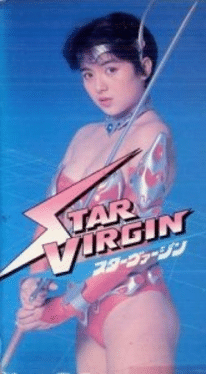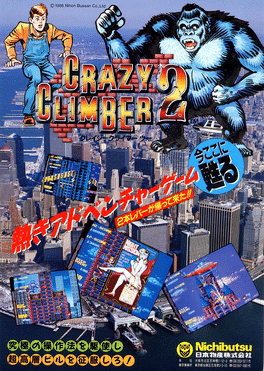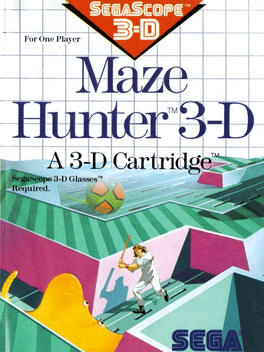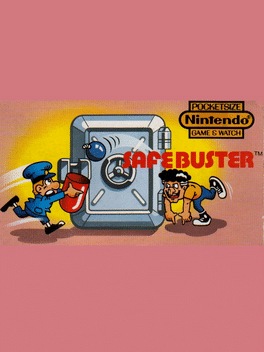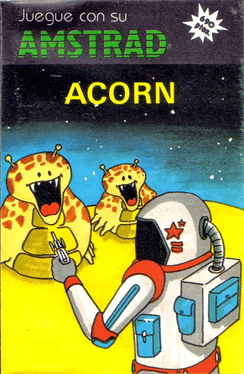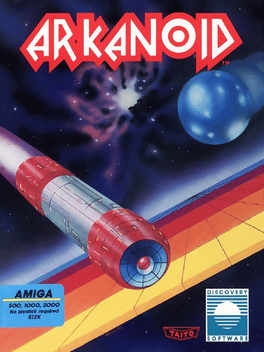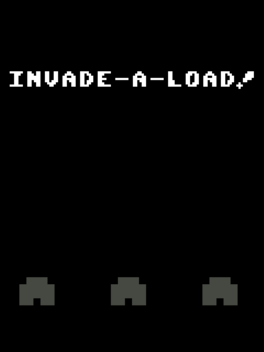New Gb Games - Page 227
-
Mouse Games
1988
-
Pac-Mania
1988
Pac-Mania
1988
Pac-Mania is a variation on the game Pac-Man. You need to guide Pac-Man around a maze and eat all of the dots on the board to proceed on to the next round. Numerous, multi-colored ghosts also roam the maze trying to stop you. If you eat one of the power pellets in the maze, the ghosts will temporarily turn blue and run from you. Pac-Man can earn bonus points by eating the ghosts when they are in this state. The maze is now shown in isometric perspective and is larger than the screen which will scroll to follow the action. To help get out of tight spots, Pac-Man can now jump. But be careful, because some of the ghosts have learned this trick as well and you could end up in a mid-air collision! -
Uju Jeonsa Dooly
1988
Uju Jeonsa Dooly
1988
The first-ever game based on the Korean manwha character Dooly. This game is a mix of multiple different genres. -
Arkanoid II
1988
Arkanoid II
1988
Eons have passed... yet despite apparent annihilation in the original ARKANOID game, Dimension-controlling force DOH has come back to life, and occupying the huge spacecraft ZARG, has entered our universe. ARKANOID-type spacefighter MIXTEC runs through long forgotten computer data until it finds the answer to this threat... VAUS 2 is launched and speeds towards the threatening alien presence, before it can extract its revenge... "Arkanoid II"! Unlike the original game, the sequel was released only in Japan. -
Balloon Fight
1988
Balloon Fight
1988
The New Wide Screen version of Balloon Fight for the Game and Watch. The game is similar to the NES classic Balloon Fight, particularly its Balloon Trip mode. The model number for the original version is BF-803, while the model number for the New Wide Screen version is BF-107. The BF in the model numbers stands for Balloon Fight. -
Arkanoid
1988
-
Amoto's Puf
1988
Amoto's Puf
1988
You start riding the blue motorbike. You must collect of the objects in the screen, avoiding to collide with the gang rival motorbike. Game is very fast so you'll have to anticipate, use the acceleration cleverly and be very quick. -
Star Virgin
1988
Star Virgin
1988
Star Virgins about as obscure as it comes, its a promotional hour long straight to video film from Japan. That was made to promote a little seen videogame of the same name distributed by Activision that only ever appeared on the long forgotten msx system. Plays out pretty much like a bonkers live action anime movie. Its a camp science fiction fantasy comedy about a girl whose secretly the lone fighter of justice Star Virgin, its her pursuit to stop the planet being attacked from robotic & puppet monsters, giant spiders and whatever else would warrant as being an end of level boss in an 80s video game... at least I think thats the overall idea, because its obviously never been translated into English its hard to totally fathom out what the hells going on, but hey thats the beauty of the Japanese movies right. Star Virgin herself is every Japanorama fanboys wetdream, shes a cute pink power ranger with her own spacecraft & powerbike and she kicks ass with a bazooka. The whole thing would have made an awesome music v -
Crazy Climber 2
1988
Crazy Climber 2
1988
Crazy Climber 2 (クレイジークライマー2?) is a 1988 arcade game developed and published by Nichibutsu. It is the sequel to the 1980 arcade game Crazy Climber. The gameplay is mostly identical to that of its predecessor, but there some significant differences. Unlike its predecessor, Crazy Climber 2 was only released in Japan. -
Maze Hunter 3-D
1988
Maze Hunter 3-D
1988
You are trapped in a twenty-level creature filled maze. Your job is to make your way to the bottom and get out alive. Pick up the iron bar and use it to destroy enemies that get in your way. Find the silver key to open the locked warp portal leading to the next level. Requires 3-D glasses to play. -
Safebuster
1988
Safebuster
1988
Safebuster is a multi-screen Game & Watch game released in January of 1988. The game was never released in Japan. The game's model number was JB-63. Worldwide Nintendo manufactured an estimated 500,000 Safebuster models. A pocket size version of Safebuster was also released in America and Europe. Safebuster also appears as an unlockable museum game in Game & Watch Gallery 4, albeit in Classic version only. In this game, the player controls a man who must catch bombs. By pressing the left or right buttons, you can move the man in the direction of the pressed button. After catching them, he must move to the edges of the screen to dispose the bombs. However, he can only hold up to three bombs. If a fourth one is caught, it will explode instead, as if a bomb was missed. -
Western Sheriff
1987
-
Nuclear Countdown
1987
-
Metalyx
1987
-
Aton
1987
Aton
1987
You must find with your spaceship the survivors of the Acorn commando who have left on a perilous mission on the planet Araquis. You will have to be on alert to avoid being captured by the Raquis, voracious creatures, who terrorize the entire population. To destroy them, you will have to use your Blaster beam. -
Arkanoid
1987
Arkanoid
1987
Port of Arkanoid for Amiga. Arkanoid is an arcade game developed by Taito in 1986. It expanded upon Atari's Breakout games of the 1970s by adding power-ups, different types of bricks, and a variety of level layouts. The title refers to a doomed "mothership" from which the player's ship, the Vaus, escapes. -
X-Race
1987
X-Race
1987
At the controls of your spaceship, skillfully dodge friendly ships which, after a tough battle against hordes of hostile aliens, return to base by taking the same access route as you. Published as a listing in Compute Mit Magazine Issue 10/87 -
Rocket Man
1987
Rocket Man
1987
A Jetpac clone that was released as a type-in listing from issue 10-11 / 1987 of Computer Kontakt dated October / November 1987. -
Pac 16
1987
Pac 16
1987
A Pac-Man clone that was originally sent for a type-in publication in 64er magazine, but got refused. -
Invade-a-Load!
1987
Invade-a-Load!
1987
Invade-a-Load! is a Space Invaders clone that is built into the fast loader software. The game plays while the fast loader loads the Commodore 64 disk.
